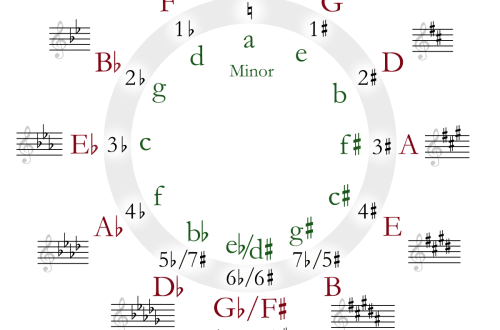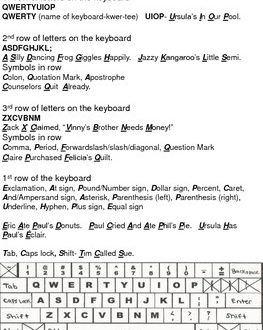
Key. Major tones.
Contents
What will help if you want to perform music above or below the original?
In the previous chapter, we studied the major scale. In the examples of the previous article, the lowest note is C. It is the tonic, from which all the other notes of the major scale were built. In fact, for a major scale, it does not matter at all which note you take as the basis (which note will become the tonic). The main thing is to keep the correct intervals between steps (they are also described in the previous chapter). As an example, let’s build a major scale from the note “sol”.

Figure 1. Major scale from the note “sol”
Please note that in order to maintain the correct intervals between notes, we were forced to use the note F-sharp (last in the figure), since there is a major second (whole tone) interval between degrees VI and VII.
Key
In our example, we took the note “salt” as the basis (tonic). We can say that our mode is at the height of the note “salt”. It is the height of the fret that is called the word ” tonality “. The name of the key consists of two words: tonic + fret. Our tonic is the note “sol”, and the mode is major. So, our tonality is called “G Major”. In the previous article, we built the major scale from the note “to”, which means we used the key “C major”.
To designate the tonic in the name of the tonality, a letter designation is used. To denote the word “major”, either the word “dur” or the word “maj” is used, or the designation of major is generally omitted. Those. C major can be denoted in the following ways: “C-dur”, “C-maj” or simply “C” (if we write only a letter, then there should always be only a capital letter). G major can be denoted similarly: “G-dur”, “G-maj”, or simply “G”. Recall that the letter designation of the note “do” is “C”, and the note “sol” is “G” (this is the material of the section “Notation of Music”).
Why are there different tones? Everything is very simple and, most importantly, convenient. Let’s take one example. Remember that tonality is the pitch of the scale. Now let’s say you want to play a song. But you are “not comfortable” to perform it, because. You do not reach some notes with your voice – they are too high. No problem. Play the song in a lower key – all the notes of the song will be proportionately lower. Let’s take the same melody in different keys as an example. First time in C major, second time in G major:
A fragment of the “Song of Friends” from the cartoon “The Bremen Town Musicians”, C major:

Figure 2. “Song of Friends” in the key of C major
Now the same fragment, but in G major:

Figure 3. “Song of Friends” in the key of G major
You see, in G major the melody is higher than in C major, although the motive remains the same.
Major keys
What is “tonality”, we have already figured out. Let’s call the major key that mode, between the steps of which the intervals of the major mode are observed.
We have just looked at the keys C-dur and G-dur. We built these keys from the notes “do” and “salt”. They were tonics. It is important to understand that absolutely any note can act as the tonic of a major key: both the main and the derivative. Those. we can build a major mode, for example, from the “D-sharp” step. In this case, our tonality will be called “D-sharp major”, or according to the letter system “D#-dur”.
Types of major keys
Of course, you noticed that in the key of G-maj, we use the note “F-sharp” instead of the note “fa”. Those. this key uses a raised degree. Depending on the chosen tonic, major keys can use a different number of derivative steps – both raised (our case with G-maj) and lowered (try to build a major scale from the note “fa” yourself). Depending on the accidentals used, major keys are divided into sharp and flat . The only C-dur major key does not use accidentals, so it is neither sharp nor flat.
Among the major keys, there are 7 sharp keys (G, D, A, E, B, F#, C#) and 7 flat keys (F, Bb, Eb, Ab, Db, Gb, Cb). The signs of alteration of keys are written at the key (immediately after the key). We remember that the effect of the accidental sign written with the key applies to the entire work (unless, of course, the key of the work is unchanged – we will study this further), so there is no need to write a sharp or flat sign every time. This simplifies both melody recording and reading.
Related keys
Keys that differ from each other in one key sign are called related . In our examples in this article, we used related keys: C-dur and G-dur.
Results
We have dealt with major keys. This is an important topic and easy enough to understand. We hope you understand.





